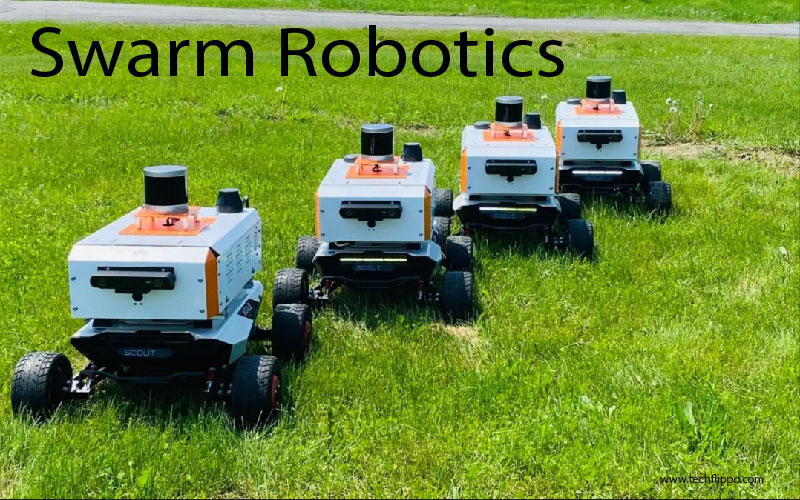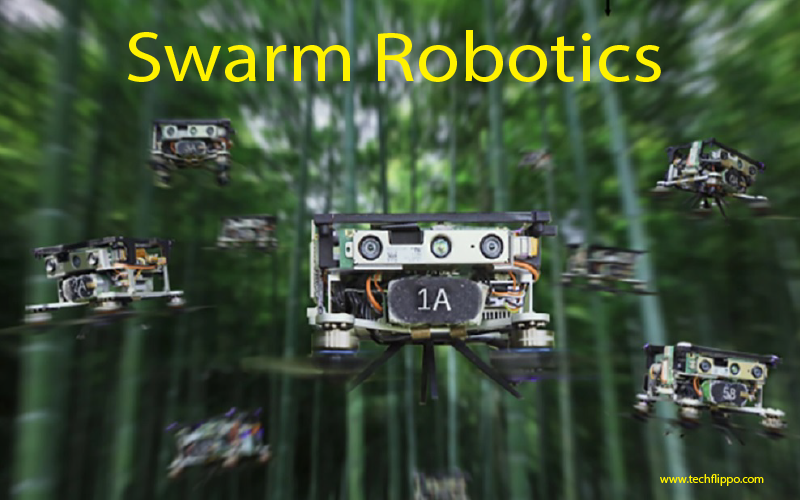How Swarm Robotics is Changing the Game
Welcome to the fascinating world of Swarm Robotics, where a collective of small robots works together seamlessly, mimicking the behavior of swarms in nature. Imagine a swarm of bees working collaboratively towards a common goal – now envision that same level of coordination and efficiency applied to robotics. Swarm Robotics is revolutionizing industries with its innovative approach to problem-solving and task execution. Let’s delve into how this cutting-edge technology is changing the game across various fields!

History and Evolution of Swarm Robotics
Swarm robotics traces its roots back to the early 1980s when researchers began exploring the concept of coordinating multiple robots to achieve collective goals. Initially inspired by social insects like ants and bees, scientists delved into developing algorithms that enabled robotic systems to communicate and collaborate autonomously.
Over time, advancements in artificial intelligence and sensor technologies propelled the evolution of swarm robotics. Researchers discovered novel ways for robot swarms to adapt to dynamic environments, self-organize efficiently, and exhibit emergent behaviors beyond individual capabilities.
The field expanded as industries recognized the potential of swarm robotics in enhancing efficiency, scalability, and flexibility in various applications. From search and rescue missions to precision agriculture, swarm robotics presented innovative solutions for complex tasks that were challenging for single robots or humans alone.
As technology continues to progress rapidly, the future of swarm robotics holds promise for even more sophisticated coordination mechanisms, improved decision-making processes, and seamless integration with other emerging technologies like IoT and machine learning. The journey from humble beginnings to cutting-edge innovations showcases the remarkable history and evolution of swarm robotics.
Advantages of Using Swarm Robotics
Swarm robotics offers a myriad of advantages that are revolutionizing the way tasks are accomplished. One key benefit is scalability – by leveraging multiple robots working together, swarm systems can efficiently handle complex tasks that would be too challenging for a single robot to tackle alone.
Another advantage is robustness – if one robot in the swarm fails, the task can still be completed by other functioning robots without significant disruption. This redundancy enhances reliability and overall performance.
Furthermore, swarm robotics enables flexibility and adaptability in dynamic environments. Individual robots can communicate and collaborate in real-time to adjust their behaviors based on changing conditions, making them well-suited for unpredictable scenarios.
Additionally, swarm systems are cost-effective as they often utilize simple robots with basic capabilities that become powerful when combined with others in a collective effort. This efficiency translates into lower maintenance costs and higher productivity levels.

Applications of Swarm Robotics in Different Industries
Swarm robotics is not just a concept for the future; it’s already making waves in various industries today. In agriculture, swarm robots can work collaboratively to monitor crops, apply fertilizers precisely, and even pollinate plants efficiently. This technology is revolutionizing traditional farming methods by increasing productivity and reducing labor costs.
The manufacturing sector benefits from swarm robotics by enhancing automation processes through coordinated robot teams that can assemble products faster and with greater precision. These robots can adapt to changing production demands seamlessly, leading to increased efficiency and reduced downtime on factory floors.
In healthcare, swarm robotics show promise in assisting with tasks like surgical procedures or drug delivery within the body. Miniature robotic swarms could potentially navigate through the human body to target specific areas for treatment without invasive surgery.
Moreover, in search-and-rescue missions after natural disasters, swarm robots equipped with sensors can comb through debris more effectively than individual machines. Their collective intelligence allows them to cover larger areas quickly while communicating vital information back to rescue teams.
From agriculture to healthcare and disaster relief operations, the applications of swarm robotics across diverse industries are limitless.
Challenges and Limitations of Swarm Robotics
One of the challenges faced by swarm robotics is maintaining communication among individual robots within the group. Ensuring seamless coordination and exchange of information can be complex, especially in dynamic environments where conditions may change rapidly.
Another limitation is the need for robust algorithms to govern the behavior of a large number of robots simultaneously. Designing algorithms that are efficient and scalable remains a significant hurdle in realizing the full potential of swarm robotics technology.
Furthermore, ensuring fault tolerance and resilience in swarm systems poses a significant challenge. As more robots join the collective, the risk of system failures or malfunctions increases, requiring innovative solutions to mitigate these risks effectively.
Additionally, ethical considerations surrounding autonomous decision-making by swarms raise important questions about accountability and control. Balancing autonomy with human oversight presents unique challenges that require careful consideration and deliberation as this technology continues to advance.
Future Possibilities and Innovations in Swarm Robotics
The future of swarm robotics holds immense potential for groundbreaking innovations. As technology advances, we can expect to see even more sophisticated algorithms and communication protocols being developed. These advancements will enable swarms of robots to collaborate seamlessly on complex tasks with increased efficiency and precision.
One exciting possibility is the integration of artificial intelligence into swarm systems, allowing robots to adapt and learn from their environment in real-time. This could revolutionize industries such as agriculture, construction, and search and rescue operations by enhancing productivity and safety measures.
Furthermore, researchers are exploring the use of bio-inspired techniques to improve swarm behavior. By drawing inspiration from nature’s collective behaviors seen in ant colonies or bird flocks, new strategies can be implemented to optimize coordination among robotic agents.
The future of swarm robotics is promising, offering a glimpse into a world where intelligent robotic swarms work harmoniously together to tackle challenges once thought impossible.
Conclusion
Swarm robotics has undoubtedly revolutionized the way we approach complex tasks by mimicking the behavior of social insects. From its humble beginnings to its current advancements, swarm robotics has showcased remarkable potential in various industries.
The advantages of using swarm robotics are evident in its ability to adapt, collaborate, and efficiently solve problems collectively. Its applications span across different fields such as agriculture, construction, search and rescue missions, and even space exploration.
Despite facing challenges like scalability and coordination issues, researchers continue to push boundaries to overcome these limitations. The future possibilities for swarm robotics are limitless – from enhancing automation processes to enabling innovative solutions for societal challenges.
As technology advances and research progresses, one thing remains clear: Swarm robotics is changing the game by redefining teamwork in a truly impactful manner. Embracing this cutting-edge technology will undoubtedly shape a more efficient and collaborative future across various industries.